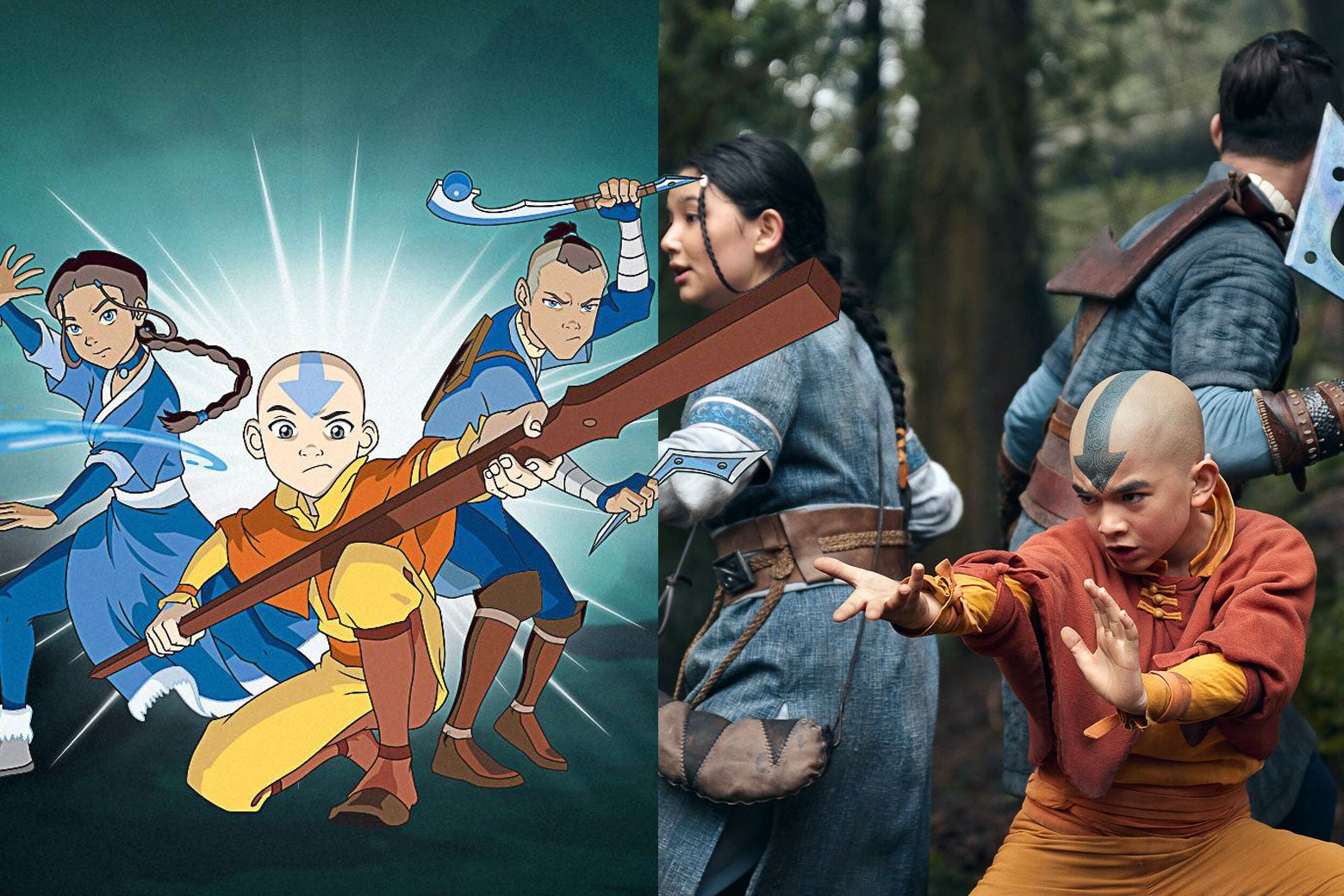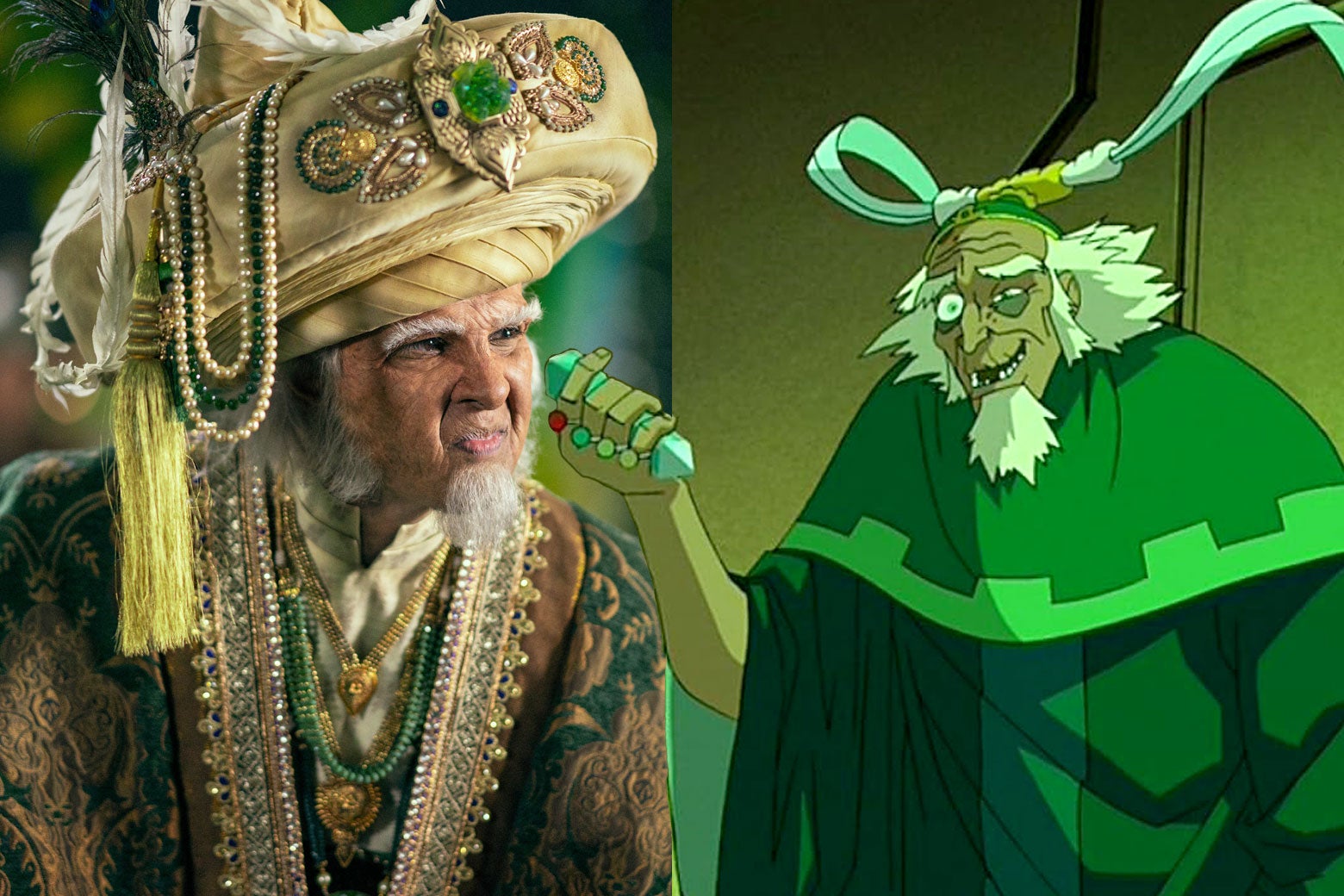There are some major differences between the animated series and the live-action show.
Netflix’s live-action adaptation of Nickelodeon’s beloved animated series Avatar: The Last Airbender has officially arrived. It’s been a long time coming: The show, set in an Asian-inspired fantasy world shaped by the ability to “bend” the natural elements, has spawned a sequel series, comic books, and a high level of interest in additional stories set in the same universe. In the lead-up to the release of Netflix’s adaptation, the show has been intensely scrutinized by the original series’ fans, especially after news broke two years into development that the creators of the cartoon, Michael Dante DiMartino and Bryan Konietzko, had walked away from the project due to creative differences. Fans couldn’t help but see foreboding echoes of the 2010 M. Night Shyamalan live-action film adaptation that is widely considered to be a terrible movie.
So how much has the series changed from the original? The answer, in short, is a lot. After all, Netflix’s version is only eight episodes so far, compared to the animated series’ 20-episode first season. There are too many differences to list, but let’s break down some of Netflix’s biggest departures from its source material.
The Beginning
One of the best aspects of the animated series is how it drops the viewer in the middle of the action, filling in much of the backstory through flashbacks as the story progresses. When we first meet Aang in that version, he’s still trapped in the iceberg that Sokka and Katara save him from. Netflix, by contrast, relays the events leading up to Aang’s (Gordon Cormier) centurylong slumber, how he became trapped in the ice, and his subsequent emergence thanks to Sokka (Ian Ousley) and Katara (Kiawentiio).
The Previous Avatars
The live-action adaptation takes plenty of liberties with how it introduces the past Avatars from whom Aang seeks help and guidance. Avatar Kyoshi (Yvonne Chapman), arguably the most popular previous Avatar among fans, gets a bigger role in this telling when she possesses the body of Aang and helps him defeat Fire Nation soldiers invading Kyoshi Island. In the original series, Kyoshi doesn’t take over Aang’s body; instead it’s the previous firebender Avatar, Roku, in a different scene, who does. While Netflix Aang does have a spiritual conversation with Roku (C. S. Lee), he later also has an extended conversation in the spirit world with the past waterbender, Avatar Kuruk (Meegwun Fairbrother). This conversation does not occur in the animated version until well into the series.
Omashu
The biggest modification Netflix makes concerns Omashu, the Earth Kingdom city that in the new series becomes home to every single plot that Netflix can cram into it.
The live-action adaptation combines the storylines of handsome anarchist Jet (Sebastian Amoruso), the traitorous Mechanist (Danny Pudi) who inspires Sokka’s inventor capabilities, and the secret tunnels under Omashu, smushing together characters, places, and events that originally appeared at different points. In the cartoon, Team Avatar runs into Jet near a Fire Nation camp, and they don’t meet the Machinist until they reach the Northern Air Temple toward the very end of the season. As for the tunnels, we don’t see them until Season 2—and, instead of Sokka and Katara traveling through them via the power of sibling appreciation like they do in the Netflix show, it is cartoon Aang and Katara who travel through them under a cloud of romance. (Luckily, though, the live-action show doesn’t omit the cave-dwelling bards singing “Secret Tunnel.”)
The character of Bumi undergoes some alterations himself, with Netflix making the king of Omashu (played by an unrecognizable Utkarsh Ambudkar) a much more antagonistic figure. In the original, Bumi puts Aang through a series of tests before Aang, at the end, realizes that the king before him is his old childhood friend, and they part on a happier note of camaraderie. In this new version, Netflix darkens the tone—something that applies to the entire series—depicting Bumi as deeply resentful of Aang’s absence during the war, and leaving it unclear as to whether the Avatar and the king of Omashu end on good terms.
Koh
Another big difference between the two Avatars is their use of Koh, the face-stealing dark spirit who resides in the spirit world. In Nickelodeon’s show, Aang briefly encounters Koh (George Takei) in Season 1, when he asks Koh for help to save the Northern Water Tribe. In this new telling, Sokka and Katara get trapped in Koh’s realm. As with Omashu, Netflix uses this episode as an opportunity to conveniently shoehorn in other major plot points while Sokka and Katara are busy slumping over on the ground—like the Hei Bai storyline, the far-too-brief inclusion of the bounty hunter June (Arden Cho), and the vital moment when the Blue Spirit rescues Aang from Commander Zhao’s capture, all of which are events that take place at different points in the original series.




.jpg)


